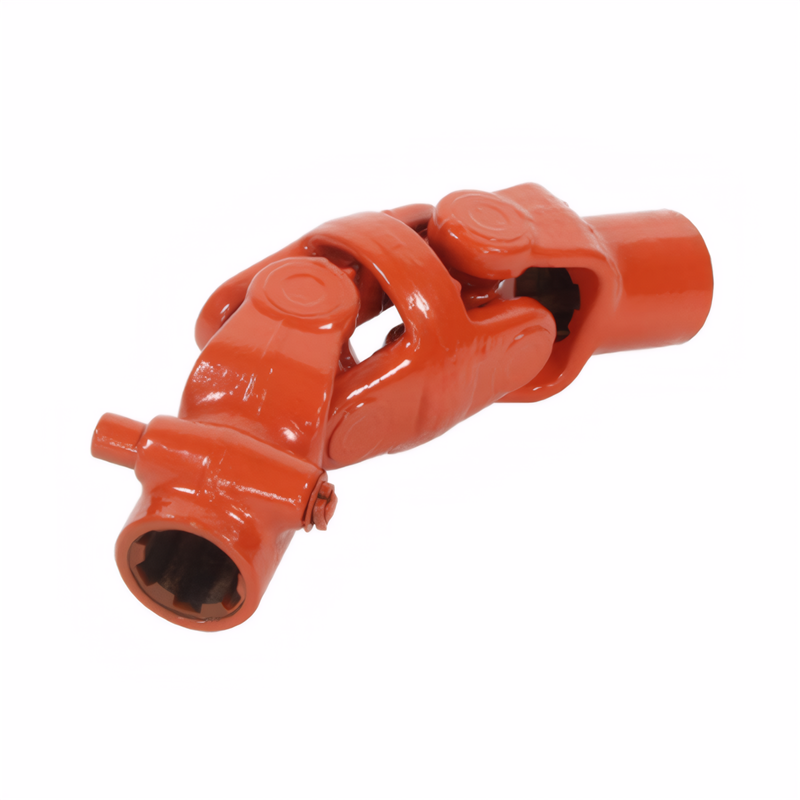Characteristics of the drive shaft for short-wheelbase vehicle models
Key Characteristics of Drive Shafts in Short-Wheelbase Vehicles
Enhanced Maneuverability Through Structural Optimization
Short-wheelbase vehicles prioritize compactness and agility, necessitating drive shaft designs that minimize length while maintaining torque transmission efficiency. The reduced distance between front and rear axles allows for shorter drive shafts, typically featuring a single-piece tubular construction without intermediate bearings. This design eliminates potential power loss points and reduces rotational inertia by 15-20% compared to multi-piece assemblies in long-wheelbase vehicles.
The absence of telescopic slip joints—common in long-wheelbase applications—simplifies the drive shaft structure. Instead, engineers implement constant-velocity joints with angular capabilities exceeding 25° to accommodate suspension travel during sharp turns. These joints maintain consistent rotational speed despite significant angle variations, ensuring smooth power delivery during abrupt directional changes.
Material selection further enhances maneuverability. High-strength aluminum alloys like 6061-T6 reduce drive shaft weight by 40% compared to steel counterparts, lowering the vehicle's center of gravity. This weight reduction improves cornering stability and reduces the turning radius by 0.5-1.0 meters, critical for urban driving and off-road navigation through tight spaces.
Dynamic Load Management Under High-Stress Conditions
Short-wheelbase vehicles experience more frequent and severe dynamic loads due to their compact dimensions. Drive shafts must withstand torsional stresses exceeding 6,000 N·m during rapid acceleration or braking, requiring advanced metallurgical treatments. Carburizing processes applied to universal joint cross-axes increase surface hardness to 58-62 HRC, preventing premature wear under cyclic loading.
Vibration isolation becomes paramount in these applications. Rubber dampers with 55-65 Shore A hardness reduce resonance frequencies below 40Hz, suppressing structural-borne noise by 10-12 dB(A). This damping system prevents drive shaft fatigue failure caused by high-frequency oscillations during off-road use or uneven pavement traversal.
The drive shaft's angular tolerance range expands to ±3° in short-wheelbase designs to accommodate extreme suspension articulation. This flexibility ensures continuous power transmission even when one wheel lifts significantly during off-road maneuvers or aggressive cornering. Finite element analysis reveals that these expanded tolerances reduce stress concentrations by 30% at joint interfaces compared to rigid long-wheelbase designs.
Adaptability to Diverse Operating Environments
Short-wheelbase vehicles often operate in extreme conditions, demanding drive shafts with superior environmental resistance. Sealing systems employ double-lip designs with stainless steel garter springs to maintain IP67 protection ratings, preventing contaminant ingress during water crossings or muddy terrain navigation. These seals extend bearing life by 300% compared to standard single-lip configurations.
Corrosion protection measures include electrocoating with epoxy-based primers followed by powder coating, providing 1,000-hour salt spray resistance. This treatment proves essential for agricultural machinery and emergency response vehicles operating in coastal or chemically treated environments.
Thermal management systems integrate into the drive shaft housing to handle extreme temperature variations. Synthetic greases with operating ranges from -40°C to +150°C ensure consistent lubrication in arctic rescue vehicles and desert-operating machinery. These lubricants reduce friction coefficient by 25% compared to traditional mineral-based greases, extending component life under sustained high-load conditions.
 The inspection method for the
The inspection method for the
 Symptoms of wear of the univer
Symptoms of wear of the univer
 Analysis of the Causes of Abno
Analysis of the Causes of Abno
 The ability of the drive shaft
The ability of the drive shaft
 简体中文
简体中文 English
English
